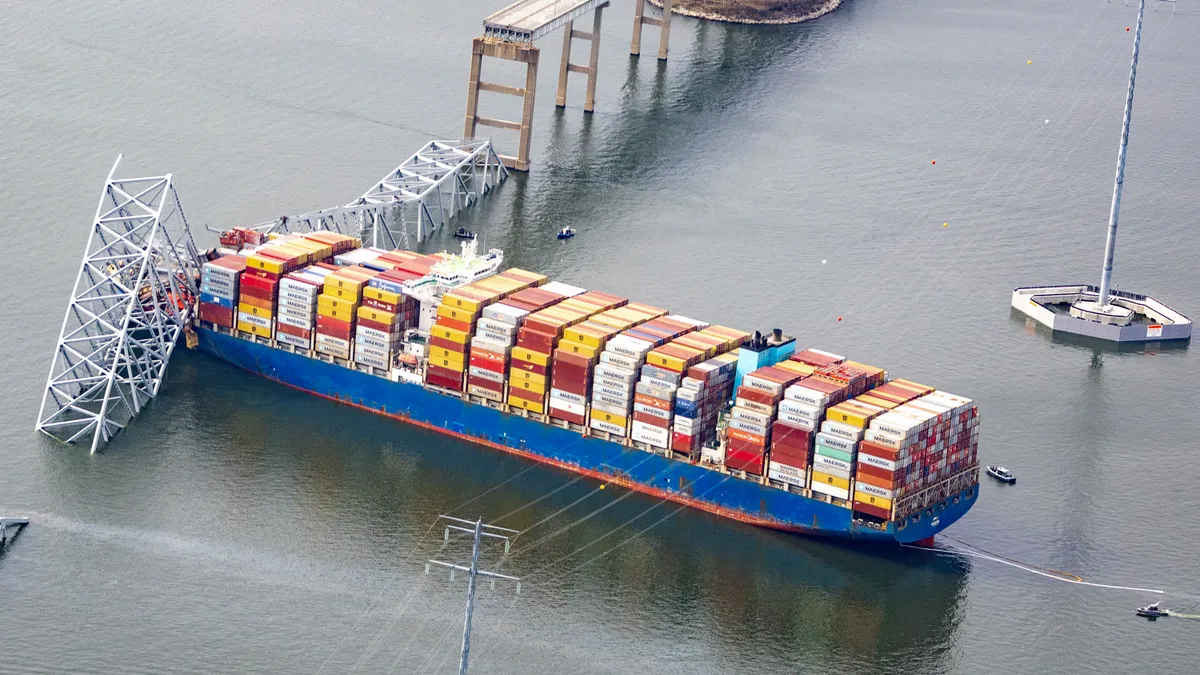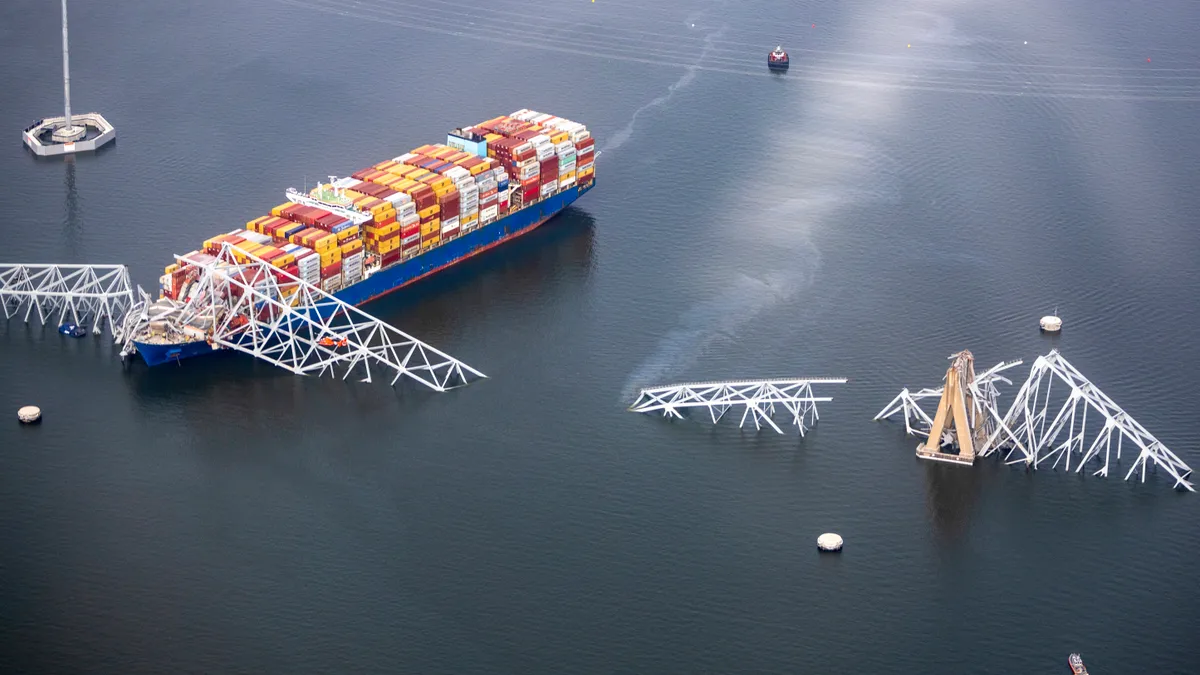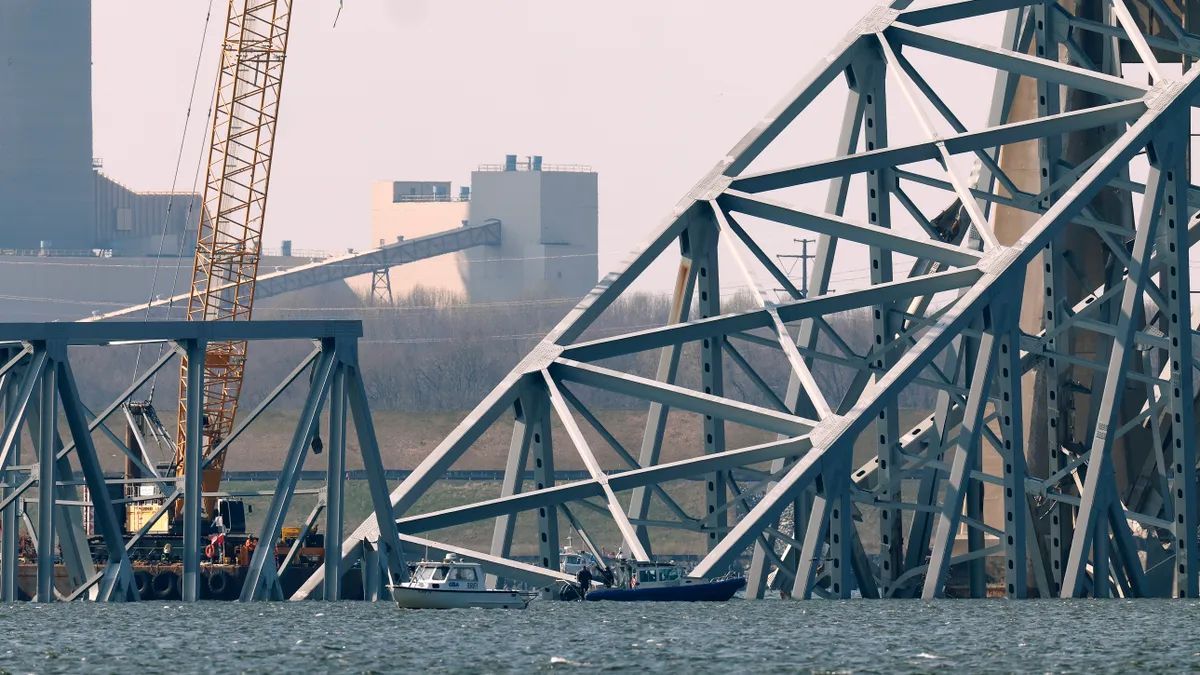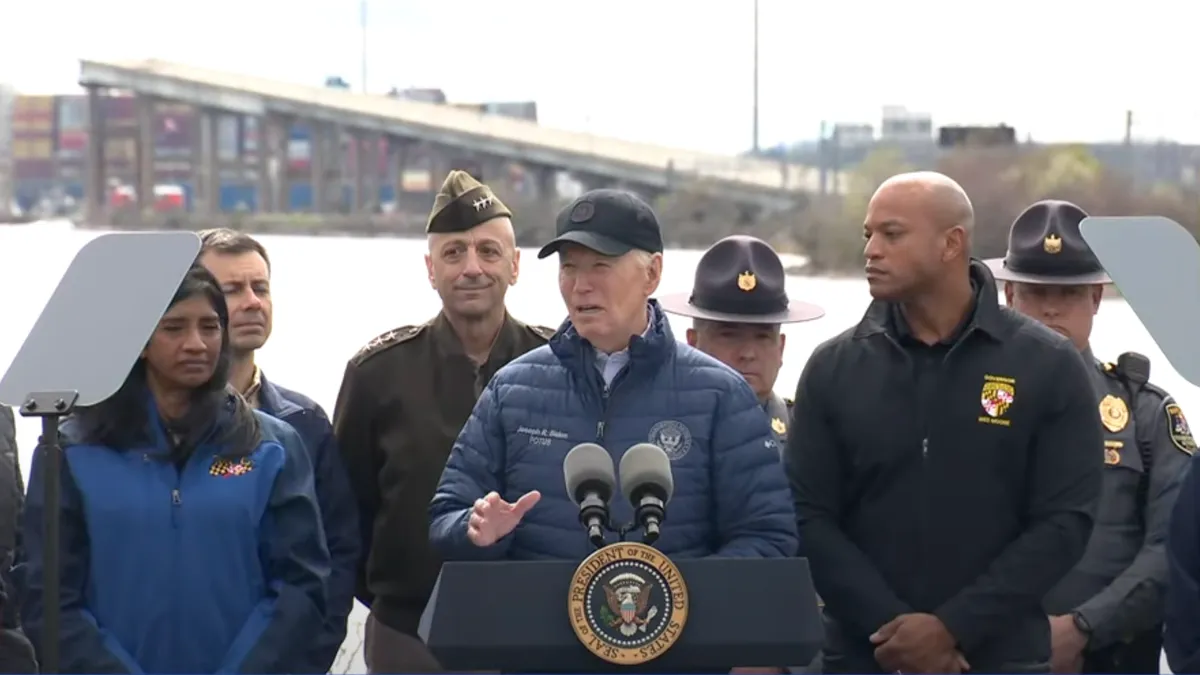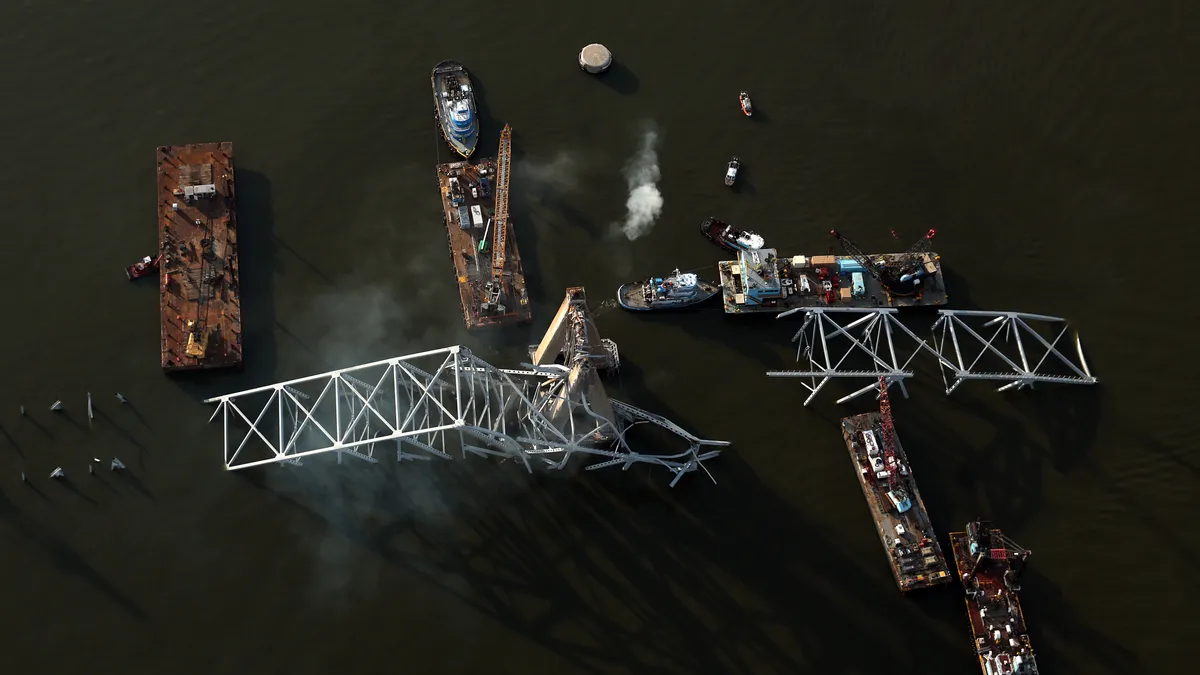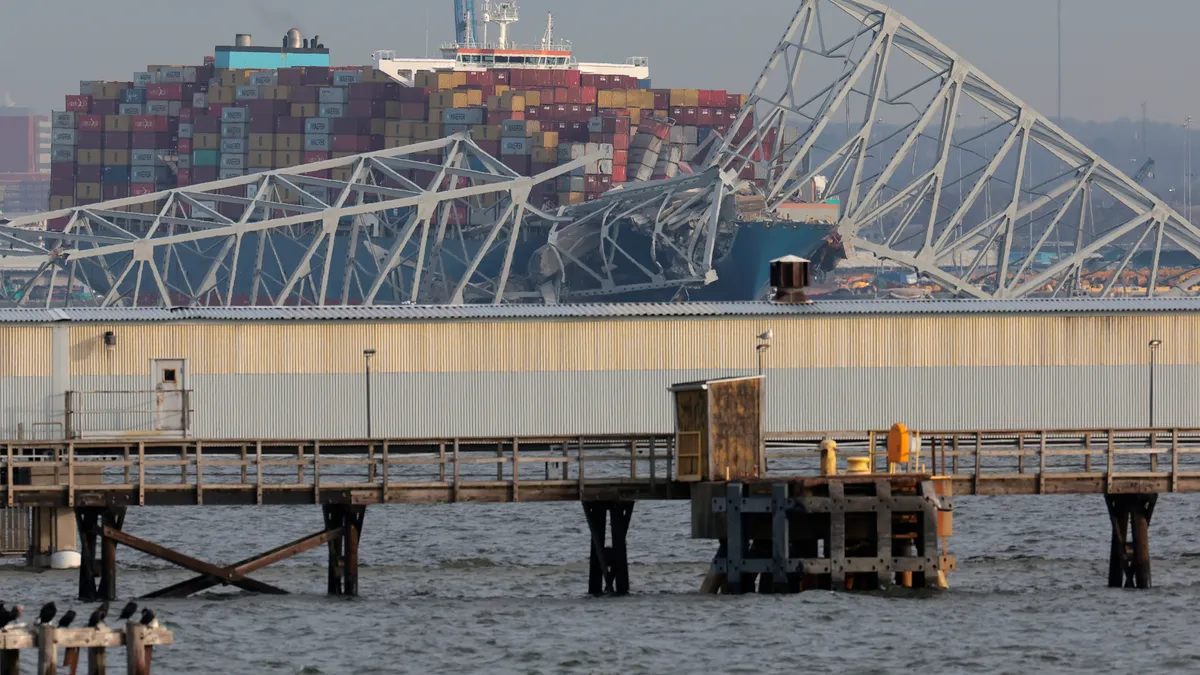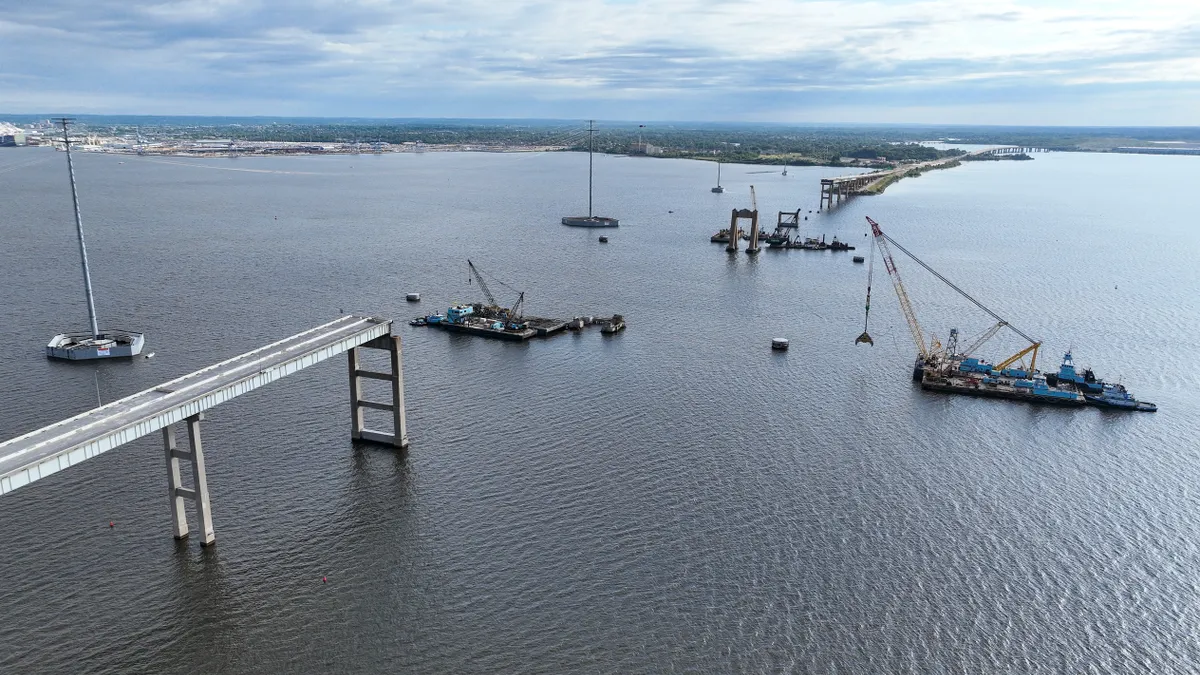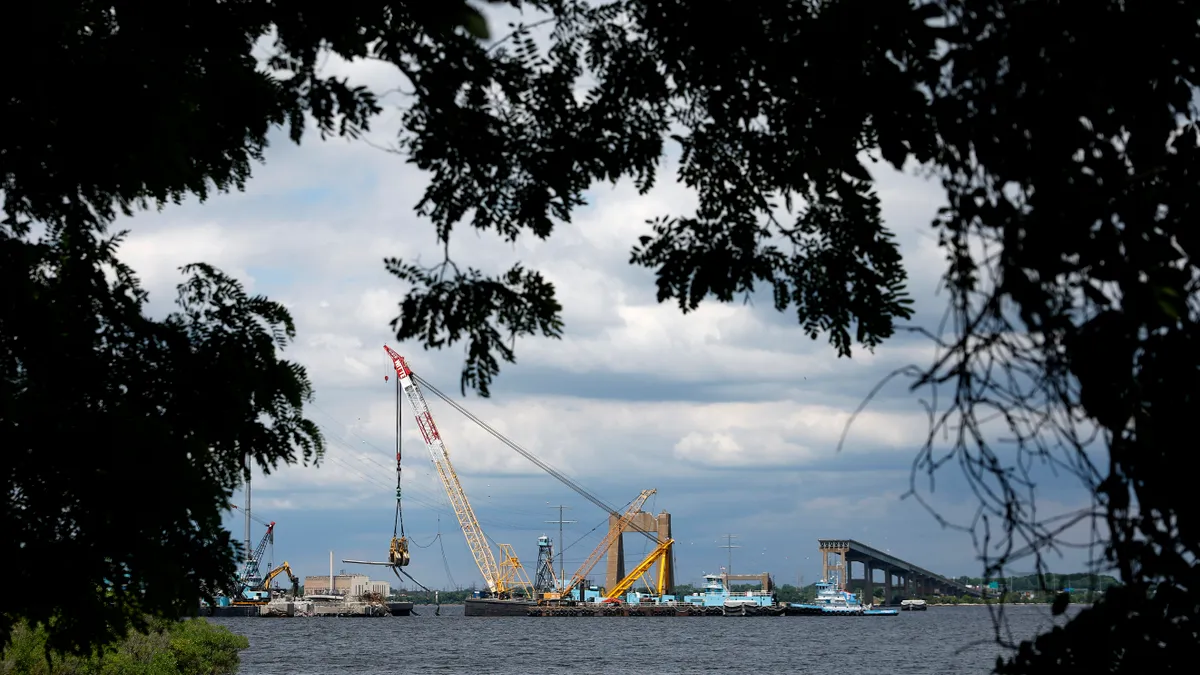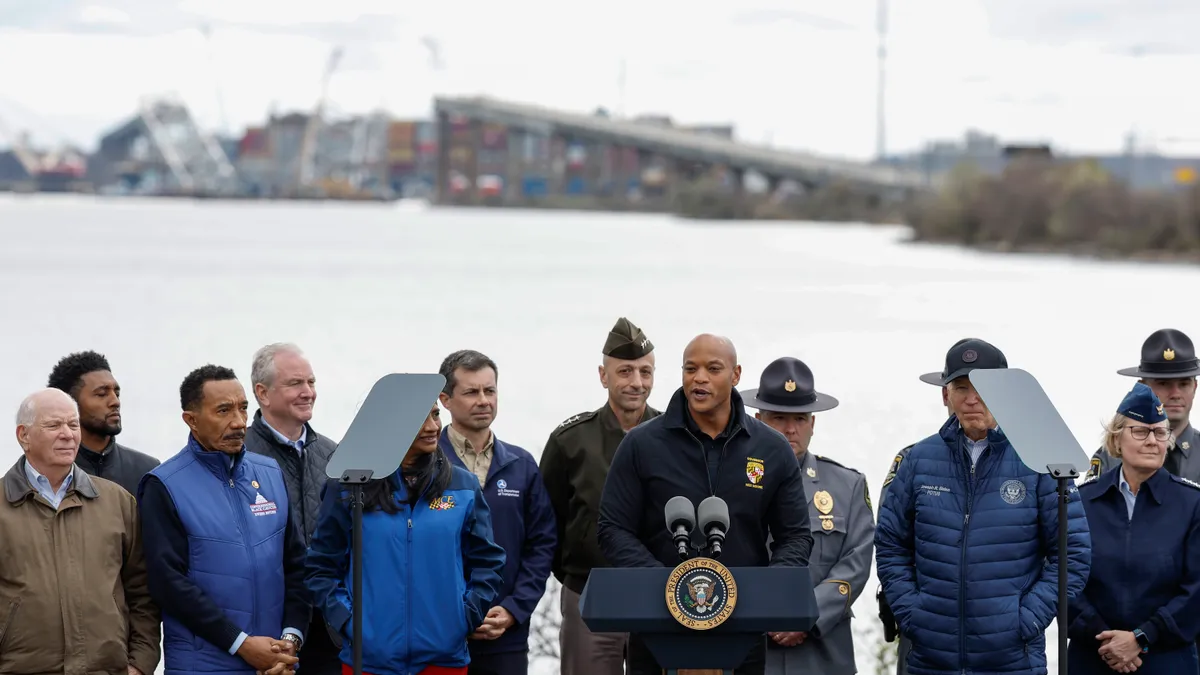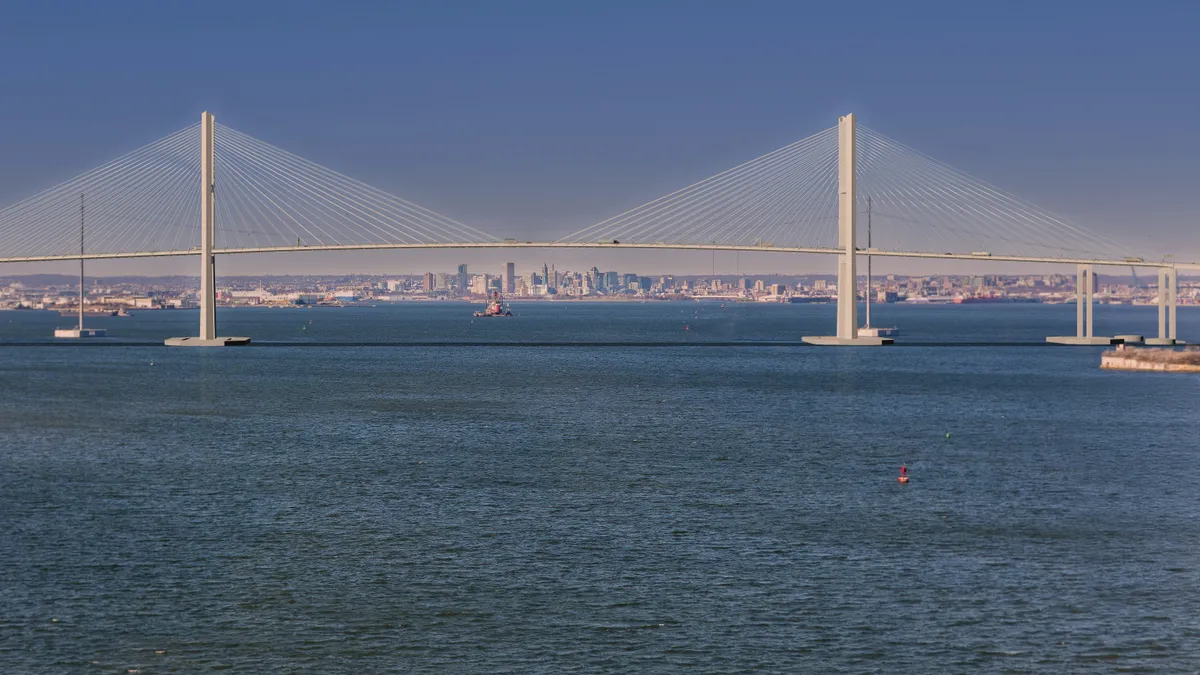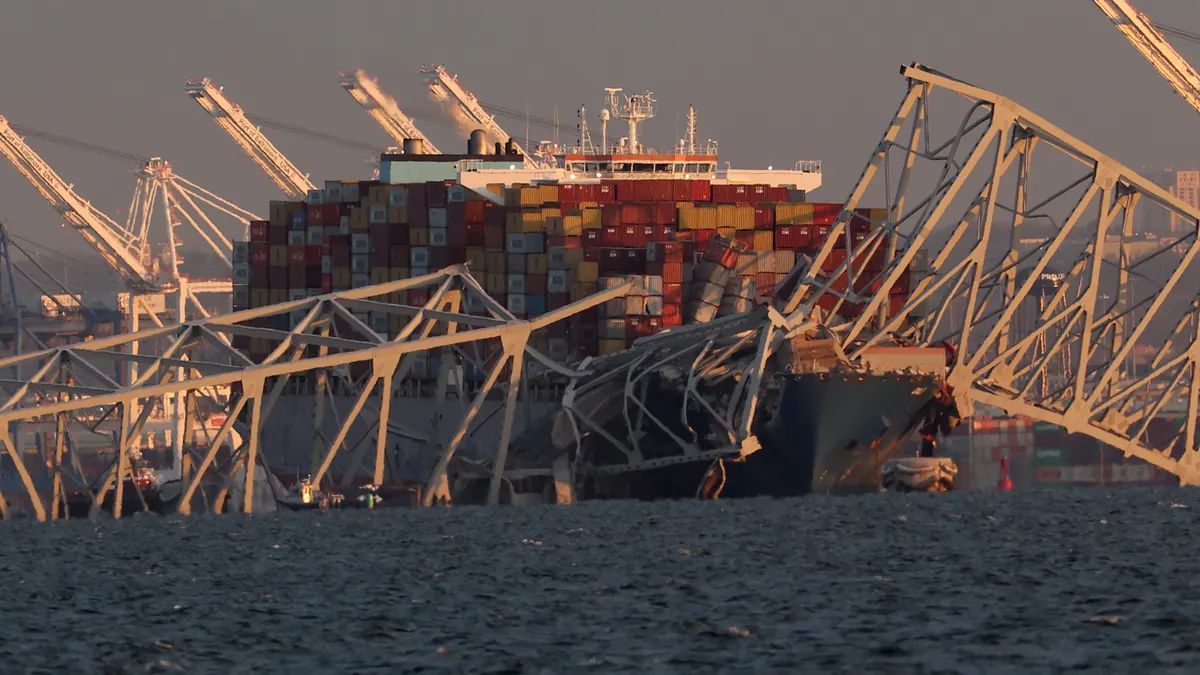As the collapse of the Francis Scott Key Bridge attracted global attention to Baltimore Tuesday, first responders continued a rescue and recovery effort and the president pledged support to rebuild the structure.
First responders spent much of Tuesday searching for six construction crew members who were carrying out normal maintenance roadwork on the bridge when it immediately crumbled into the Patapsco River after a cargo ship collided with one of its supports.
“The crew that was out there working was basically repairing potholes,” said Maryland Transportation Secretary Paul Wiedefeld during a news conference Tuesday. He noted there were not any known structural issues that contributed to the collapse. Maryland Gov. Wes Moore said the Key Bridge was up to code.
Crews rescued two people Tuesday morning, one uninjured and one in serious condition, according to reports. But the six workers who were on the bridge during the collapse remained unaccounted for Tuesday afternoon.
The missing workers were reportedly part of a night work crew employed by Brawner Builders, according to the Baltimore Banner. The Hunt Valley, Maryland-based general contractor did not immediately respond to Construction Dive’s request for comment.
The bridge, which carried I-695 through the region, is a vital artery for the greater Baltimore area and the channel serves as a critical pathway to the busy Port of Baltimore.
Collapse background
The Singaporean-flagged cargo ship Dali appeared to lose power twice as it traveled down the channel early Tuesday morning, according to news reports, and the ship’s speed dropped to 8 knots, or about 9 mph, Moore said during the news conference.
Slow velocities can limit the ability of large vessels to steer effectively, but still be fast enough to cause vast damage in the case of a collision. A ship’s course can also be more heavily influenced by tides and currents when traveling at slow speeds.
In news photos from the scene, the ship’s anchor on its port — or left — side, also appeared to be deployed, an action mariners can take in an emergency to stop a vessel’s movement. The ship struck the bridge at around 1:30 a.m., causing the span that workers were performing maintenance on to collapse into the 47 degree Fahrenheit water of the river below.
The Key Bridge was a three-span, continuous steel truss bridge, so the piers used to support the bridge all shared the load, according to Rachel Sangree, associate teaching professor at Johns Hopkins University’s Department of Civil and Systems Engineering.
“Certainly it was a huge vessel in comparison to the pier itself, so it couldn’t have been expected to withstand that impact,” Sangree told Construction Dive in an interview. “For one of those support piers to be removed, it’s not surprising the bridge collapsed the way it did.”
Sangree also pointed to the Sunshine Skyway bridge collapse in Florida in 1980. The Tampa Bay span broke in a similar way when struck by a freighter in a disaster that claimed 35 lives.
As a result of that catastrophe, specifications on bridges over channels were made to protect the piers and implement a warning system to alert drivers and stop them from crossing, Sangree said. The Key Bridge was built in 1977, before those requirements were in place.
Still, the Dali’s crew issued a mayday call about power issues and their loss of control before the crash occurred, which allowed local authorities to stop vehicles before they crossed the bridge Tuesday.
“Those people are heroes,” Moore said on Tuesday. “They saved lives last night.”
Rebuilding the bridge
Maryland Sen. Chris Van Hollen said at Moore’s press conference that the National Transportation Safety Board will conduct an investigation of the collapse, and that U.S. Transportation Secretary Pete Buttigieg would be releasing funds for the repair and recovery effort soon.
In a press conference Tuesday, President Joe Biden offered sympathies, commended first responders and underlined the importance of both the Port of Baltimore and the Key Bridge as vital for transit and the U.S. supply chain. He pledged the federal government’s support to finance the rebuilding.
“It’s my intention that the federal government will pay for the entire cost of reconstructing that bridge, and I expect Congress to support my effort,” Biden said.
Asked if the shipping company, if found at fault, should pay for the replacement, Biden said “That could be, but we’re not going to wait for that to happen.”
Moore indicated that there is not yet a timeline for replacing the Key Bridge.
“No one knows how long it’s going to take to [re]build that bridge,” he said. Nonetheless, Moore promised the span would be rebuilt, but current efforts were focused on immediate recovery.
Impact still unclear
As a result of the collapse, vessel traffic in and out of the Port of Baltimore is suspended until further notice.
Baltimore has ranked as the busiest port in the country for shipping of autos and light trucks for the last 13 years. In 2023, the port handled a record 847,158 cars and light trucks. The city is valuable to the auto industry due to its far inland position up the Chesapeake Bay and rail connections to Midwest automakers.
Meanwhile, 35,000 cars crossed the Key Bridge everyday and Moore acknowledged the impact to Marylanders' daily commutes.
Biden said in his Tuesday press conference that clearing the channel for the port to reopen and shipping to continue is the top priority.
Sangree said she hoped the Key Bridge underscored the immense value of U.S. infrastructure and its ripple effect when damaged.
“Let’s not wait for the next tragedy to happen to think about the importance of infrastructure,” Sangree said. “Let’s think about it all the time and how a bridge collapse in Baltimore will impact people everywhere.”
CLARIFICATION: This story has been updated with information about pier protections and the Key Bridge's construction timeline.
Julie Strupp and Joe Bousquin contributed to this report.



